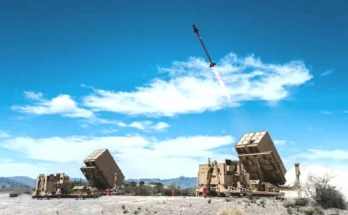by Richard Pettibone, Aerospace & Defense Companies Analyst, Forecast International.
As defense markets continue to adapt to dynamic economic and political forces, the major players continue to hold their entrenched positions.
Regional turmoil in parts of the Middle East, Europe and Asia continue to drive the need for more spending. Further, international sales for many firms are set to expand, driven by fear over the Islamic State (also known as ISIS), a more bellicose Russia, and regional pressures from China and North Korea.
These issues are key drivers of recent spending increases in the U.S. According to government transparency site usaspending.gov, the U.S. government awarded a total of $473.8 billion in contracts in FY16, up 8.2 percent from $437.9 billion in FY15. Of this $473.8 billion, $303.7 billion, almost 64 percent, was awarded by the Department of Defense.
Recently, the General Services Administration’s U.S. Federal Procurement Data System – Next Generation released its annual Top 100 Federal Contractors report – Fiscal Year 2016. The top 10 federal contractors accounted for $140 billion of the obligated dollars, with Lockheed Martin at the top with $43.4 billion (9.1% of the obligated total), followed by Boeing with $26.5 billion (5.6% of the obligated total).
 With a new U.S. administration in charge, many defense companies are adopting a wait-and-see attitude in regard to future spending priorities. The consensus is one of guarded optimism that sequester will be revisited and defense expenditures will rise dramatically.
With a new U.S. administration in charge, many defense companies are adopting a wait-and-see attitude in regard to future spending priorities. The consensus is one of guarded optimism that sequester will be revisited and defense expenditures will rise dramatically.
Initially, companies such as Lockheed Martin and Boeing were taken to task over high-profile programs such as the Lockheed Martin F-35 and Boeing 747 Air Force One. But in the subsequent months following the start of President Trump’s administration, the rhetoric has toned down and defense spending is now set for an upswing.
According to Forecast International’s Defense & Aerospace Companies reports, growth isn’t limited to U.S. markets. The Trump administration has also caused a ripple effect in defense spending among European allies that should see firms such as Airbus, BAE Systems, and Leonardo benefit in the years ahead.
In Asia, many governments are facing a variety of threats, most notably from North Korea. As a result, defense spending on new programs in Japan and South Korea is on the rise. Standing to benefit from this growth are firms such as Mitsubishi Heavy Industries and Kawasaki in Japan as well as Hanwha and Korea Aerospace Industries in South Korea.
Perhaps most importantly, many of these firms will be seeking to bulk up their cybersecurity operations. Almost every major defense firm in the U.S. has added operations related to this sector over the past five years. With Internet-based attacks now a daily occurrence, this market will continue to experience strong growth for the firms that can deliver in the years ahead.
The Defense & Aerospace Companies series focuses on worldwide aerospace and defense prime contractors and subcontractors. Concise reports provide data on individual corporations regarding recent mergers, restructurings, and joint ventures, along with a Strategic Outlook that examines the company’s strengths, weaknesses, and opportunities. Also included in each report are financial and industrial segment data, snapshot coverage of major aerospace and defense programs, and recent U.S. Department of Defense contract awards.
For 50 years, Forecast International intelligence reports have been the aerospace and defense industry standard for accurate research, analysis, and projections. Our experienced analysts compile, evaluate, and present accurate data for decision makers. FI's market research reports offer concise analysis of individual programs and identify market opportunities. Each report includes a program overview, detailed statistics, recent developments and a competitive analysis, culminating in production forecasts spanning 10 or 15 years. Let our market intelligence reports be a key part of reducing uncertainties and mastering your specific market and its growth potential. Find out more at www.forecastinternational.com




